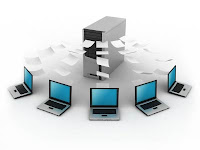Friday, 2 December 2011
Development Database Career Path
Development Database s are more like cooks: they don’t necessarily know anything about Freon, but they know how to whip up a mean dish, and they know what needs to go into the fridge. They decide what food to bring home and put in the chill chest, what should go into the fridge and what should go into the freezer.
Development Database focus on the creation process, working with programmers and architects to build solutions. Programmers that want to become Database usually get a head start on the development role because of their programming experience. They end up doing the development Database position by default when their team needs database work done.
Production Database Career Path
Production Databases are like fridge technicians: they don’t necessarily know how to cook, but they know how to fix the fridge when it breaks. They know all the tricks to keep the fridge at exactly the right temperature and humidity levels.
Production Database take over after applications have been created, keeping the server running smoothly, backing it up, and planning for future capacity needs. Network administrators that want to become Database get their start by becoming the de facto Database for backups, restores, and managing the server as an appliance.
Thursday, 1 December 2011
The Importance of a Database
what is the database management
 A database management system (DBMS), sometimes just called a database manager, is a program that lets one or more computer users create and access data in a database. The DBMS manages user requests (and requests from other programs) so that users and other programs are free from having to understand where the data is physically located on storage media and, in a multi-user system, who else may also be accessing the data. In handling user requests, the DBMS ensures the integrity of the data (that is, making sure it continues to be accessible and is consistently organized as intended) and security (making sure only those with access privileges can access the data). The most typical DBMS is a relational database management system (RDBMS
A database management system (DBMS), sometimes just called a database manager, is a program that lets one or more computer users create and access data in a database. The DBMS manages user requests (and requests from other programs) so that users and other programs are free from having to understand where the data is physically located on storage media and, in a multi-user system, who else may also be accessing the data. In handling user requests, the DBMS ensures the integrity of the data (that is, making sure it continues to be accessible and is consistently organized as intended) and security (making sure only those with access privileges can access the data). The most typical DBMS is a relational database management system (RDBMS). A standard user and program interface is the Structured Query Language (SQL). A newer kind of DBMS is the object-oriented database management system (ODBMS).
A DBMS can be thought of as a file manager that manages data in databases rather than files in file systems. In IBM's mainframe operating systems, the nonrelational data managers were (and are, because these legacy application systems are still used) known as access methods.
A DBMS is usually an inherent part of a database product. On PCs, Microsoft Access is a popular example of a single- or small-group user DBMS. Microsoft's SQL Server is an example of a DBMS that serves database requests from multiple (client) users. Other popular DBMSs (these are all RDBMSs, by the way) are IBM's DB2, Oracle's line of database management products, and Sybase's products.
IBM's Information Management System (IMS) was one of the first DBMSs. A DBMS may be used by or combined with transaction managers, such as IBM's Customer Information Control System (CICS).
Subscribe to:
Posts (Atom)

